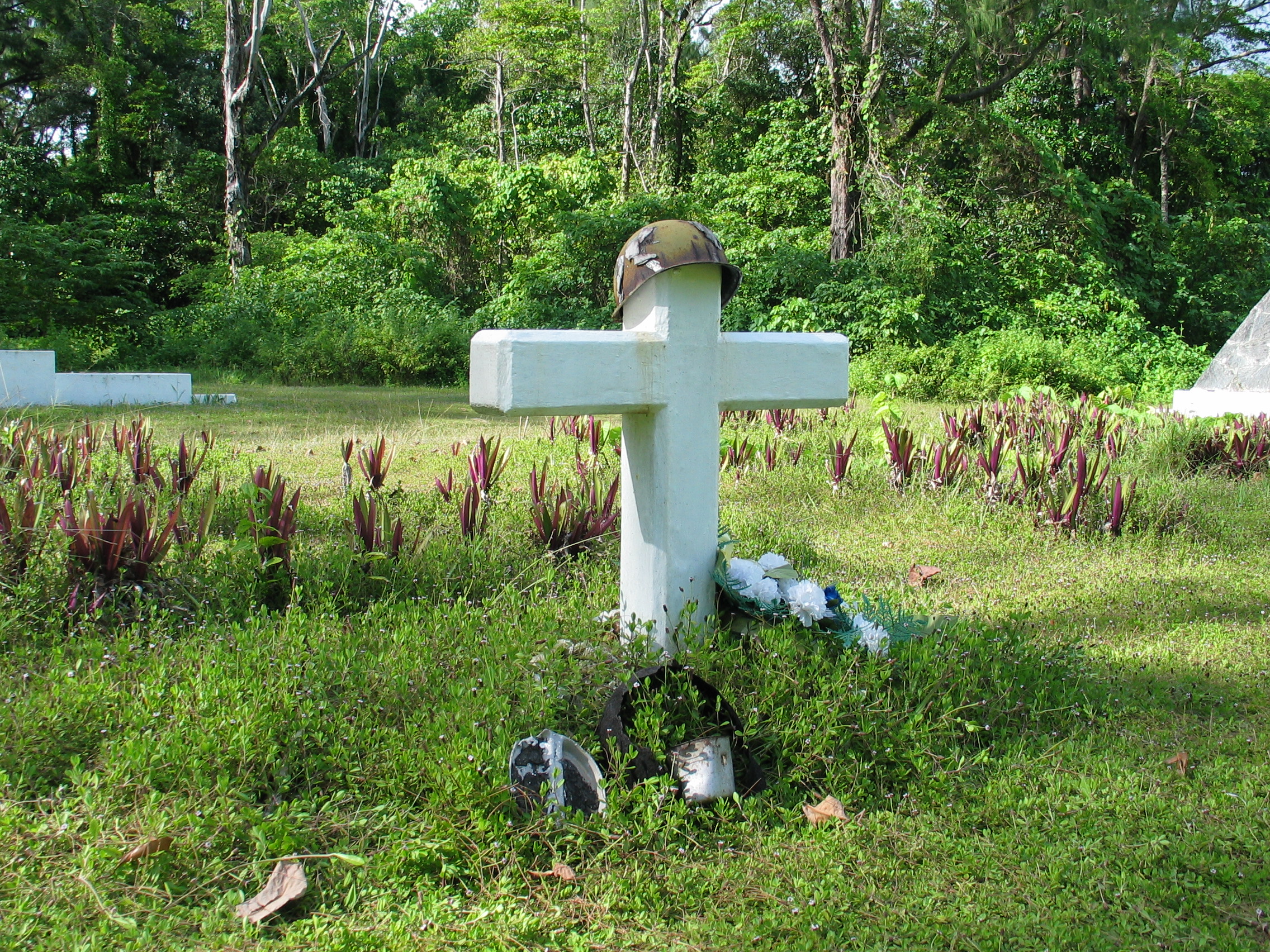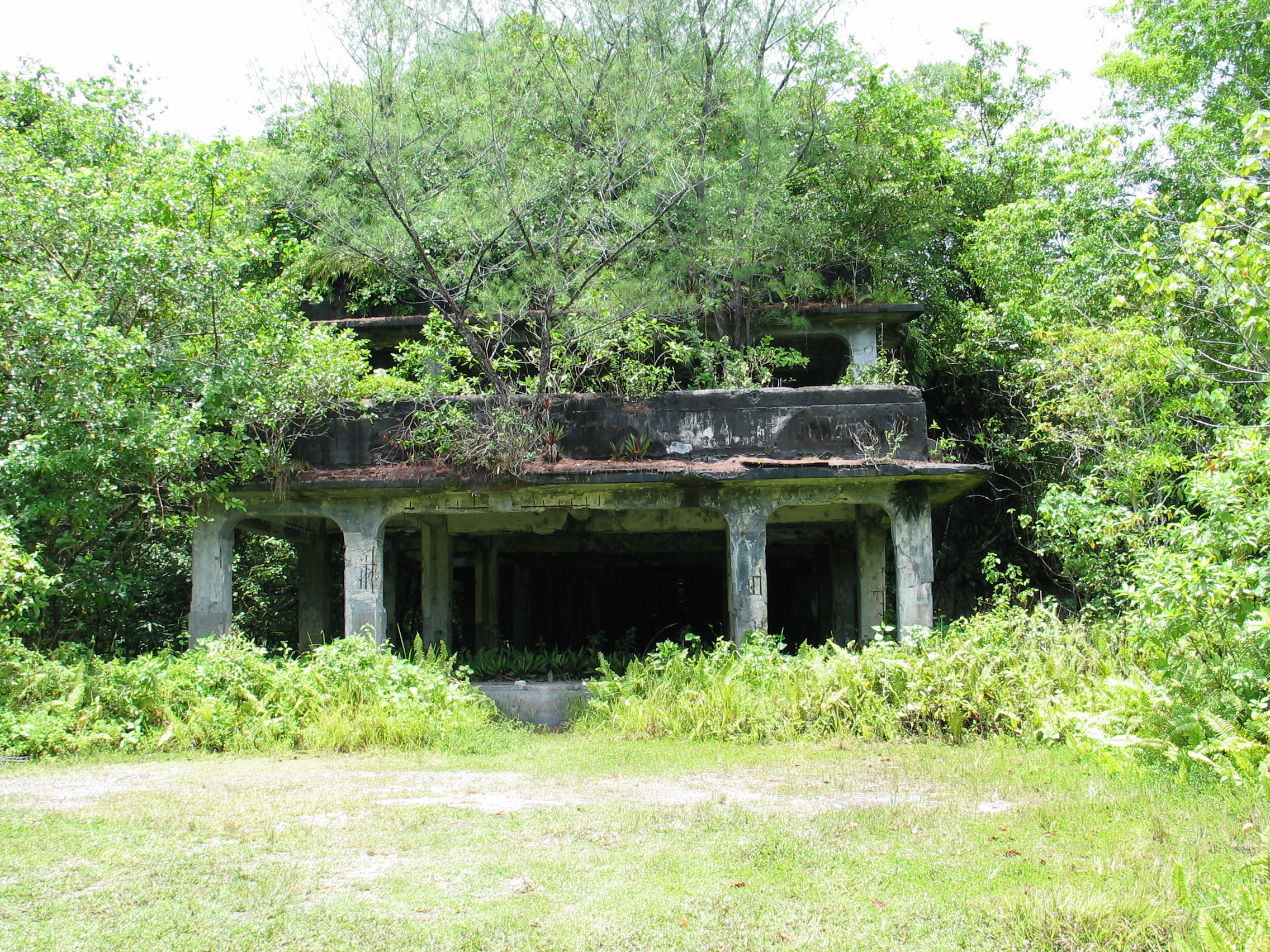Exploring the Island 60 Years After the Battle
I asked the veterans if this was how they recalled Peleliu.They said that if we could clear all the plant growth they could answer me. Nature has repaired herself from the ravages of war, but the remnants of war were all around.
There were .30-calibre cartridge belts encrusted into coral now on permanent display on the beach. Tracks, axles and tires from vehicles damaged in the landing remain. As you move further inland, hand grenades, mortar rounds and small arms ammunition are not hard to find.
The Peleliu government outlaws the removal of war relics from the island but it must have been tempting to battle buffs. While we were there, we observed a film crew filming the opening of a sealed cave near White Beach 2. Numerous Japanese remains are in these caves and the film crew was making a film entitled the "The War Caves of Peleliu." The film producer thought that she had permission to dig in the area, but it must not have been the case since the local police stopped the digging and roped off the area as a crime scene. What will become of the film is not clear, but what is clear is that the Peleliu government intends to enforce its laws.
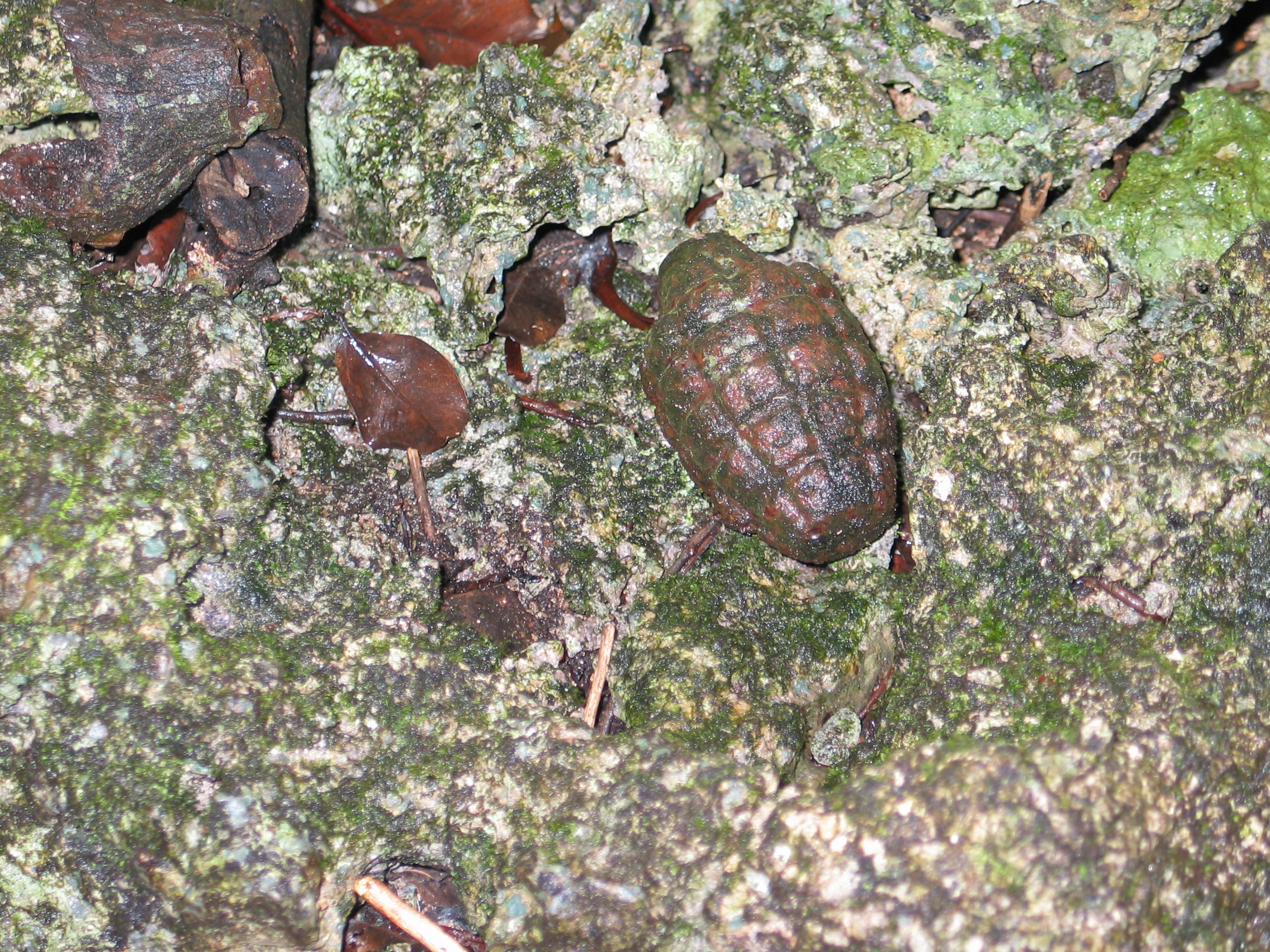
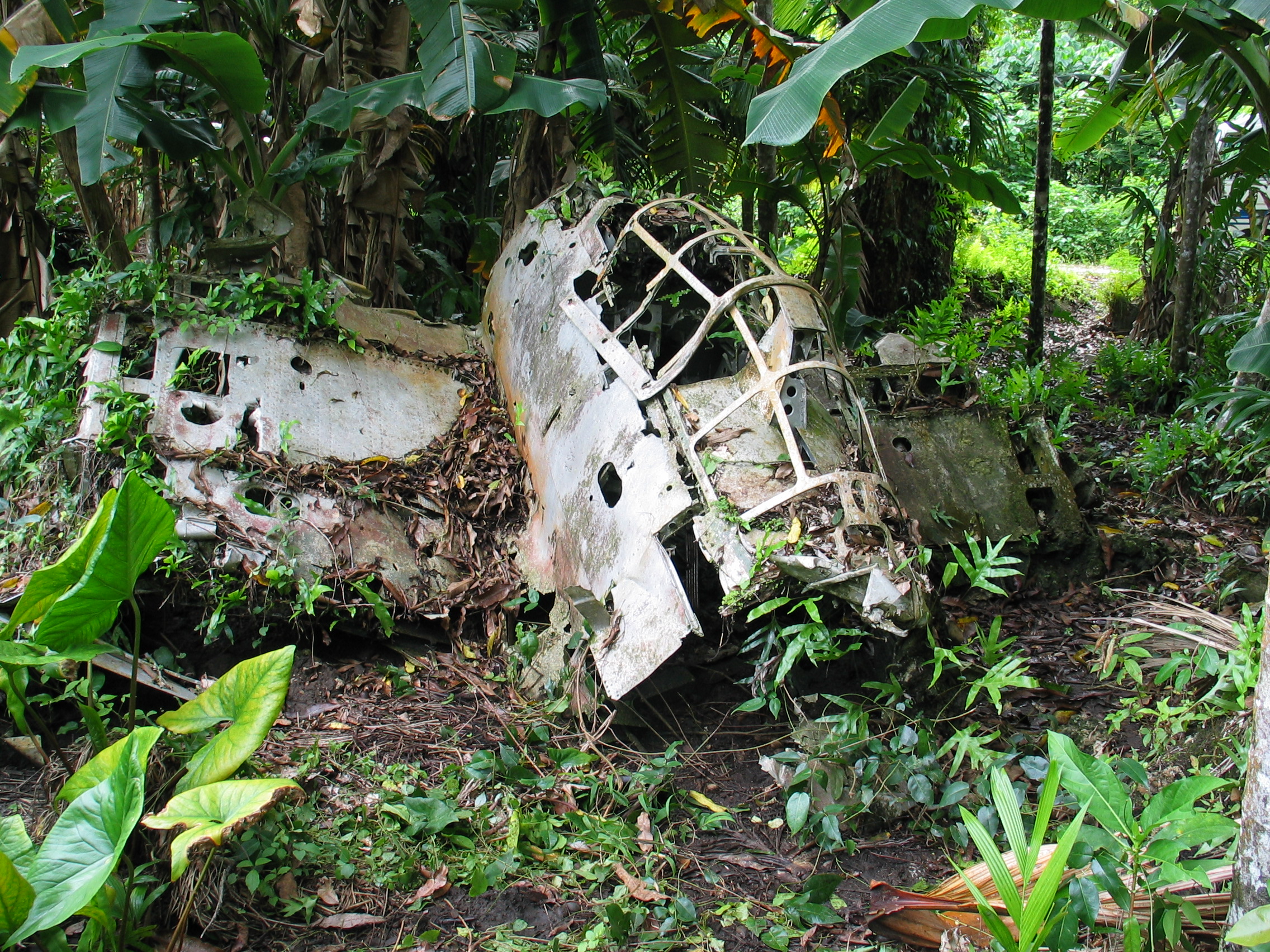
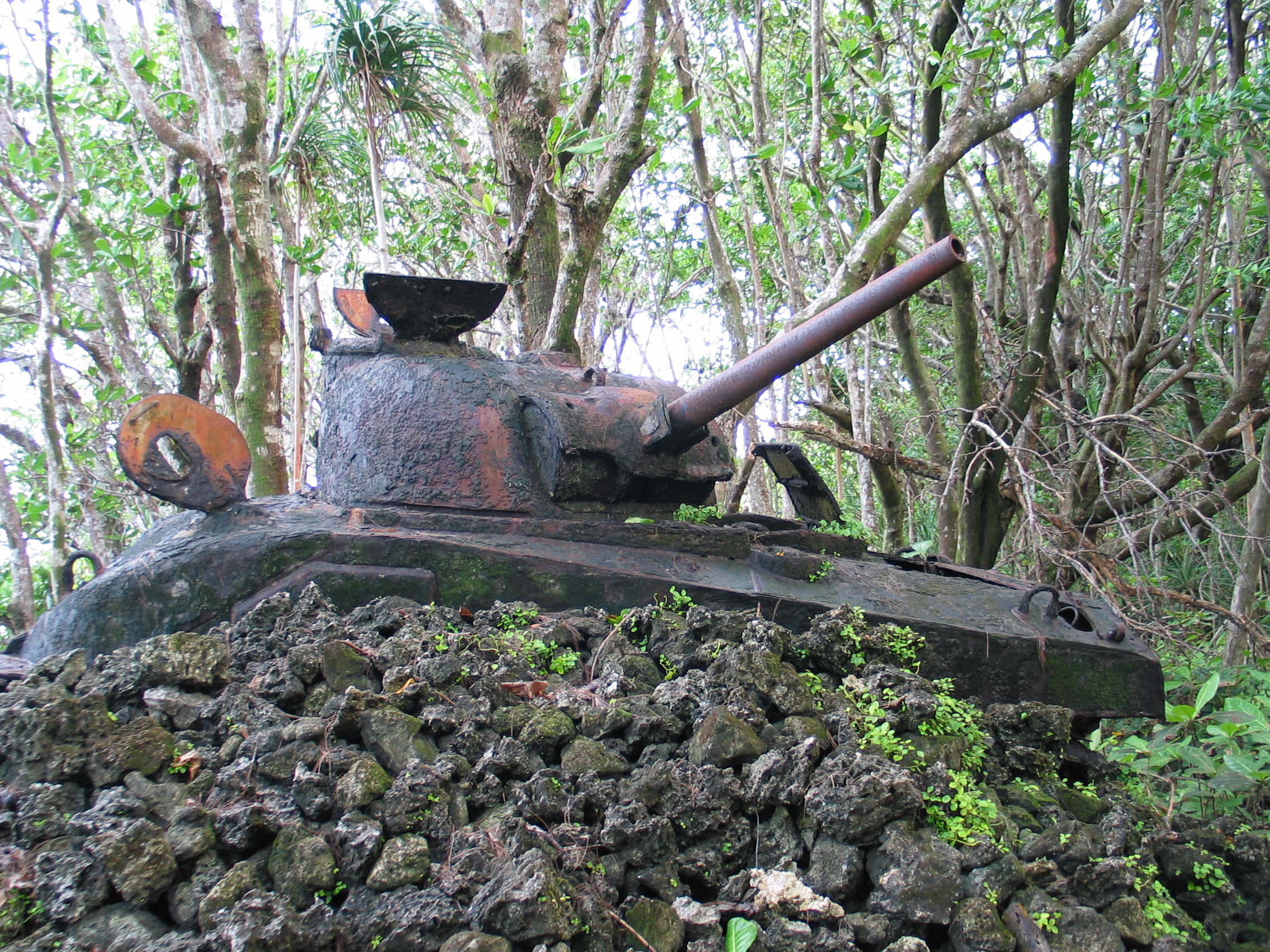
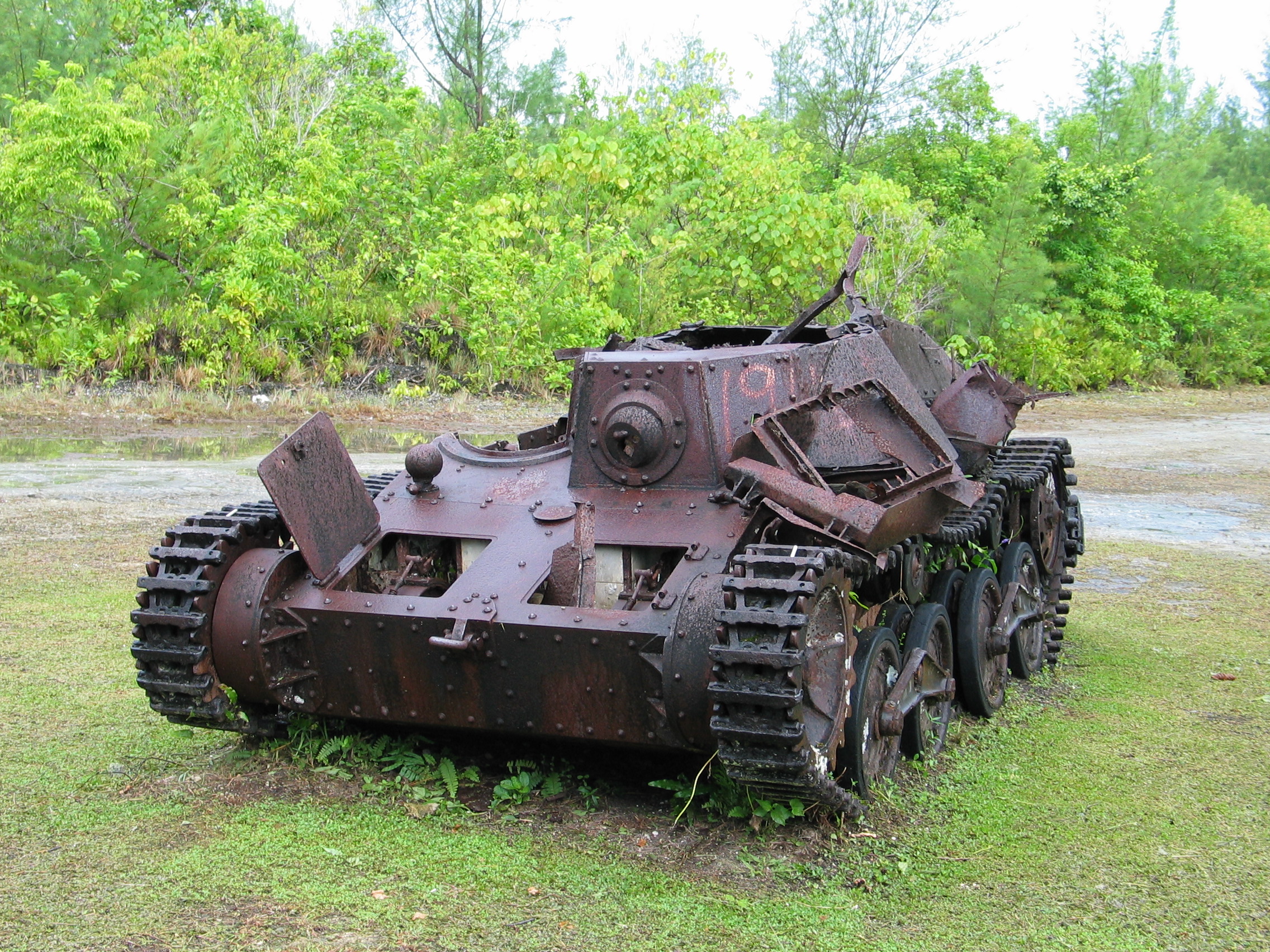
The Military Cemetery
I wanted to see the military cemetery and chapel although I knew that American remains had been removed from this site. The chapel had been severally damaged during a typhoon and only the four corners of the structure remained. Although there were markers, including the ones erected by the army, no other trace of the cemetery exists and it is now completely overgrown by trees. In addition, the anti-tank ditch, so instrumental in the early days of the battle, appears as if it could not stop a modern day SUV.We visited several destroyed American and Japanese vehicles including tanks and amtracs and listened to each veteran's recollection of the Japanese's failed tank counterattack. We studied the various Japanese pillboxes, bunkers, blockhouses and air-raid shelters. The scars of battle are quite evident, but the structures remain as they did at war's end except for some modern day graffiti. The Japanese Headquarters building is completely surrounded by trees as if to protect it. One tree decided to begin growing on the second floor. We entered some of the larger caves, now home to bats and birds. The floors of the caves are littered with bottles, ammunition and other signs of occupation. It is stated that there are over 500 such caves. The Japanese have permission to remove human remains of Japanese soldiers from these caves which are burned in a private ceremony in keeping with their custom.
Our local guide was Tangie Hesus and it would be difficult to find these war sites without a local's assistance. Tangie was instrumental in establishing the Peleliu World War II Memorial Museum that is located in a damaged Japanese warehouse. He had gathered many of the war relics that were found on the island in order to preserve them and to prevent further deterioration. I was more interested in the human side of the battle and there were many donated personal narratives, letters and artifacts in the museum. It was to be officially dedicated during the 60th observance of the battle.
